Application of Segmented and Prestressed Supporting Structures in Bridge Crane Systems: Potentials and Challenges
Abstract
:1. Introduction and Related Work
2. Design Approach
2.1. Design Philosophy
2.2. Segmented Truss Design
2.3. Segmented Box Section Design
3. Dimensioning Aspects
3.1. Compliance with Material Strength Values
3.2. Ensuring Elastic Stability
3.3. Fatigue Strength Verification and Dynamic Behavior
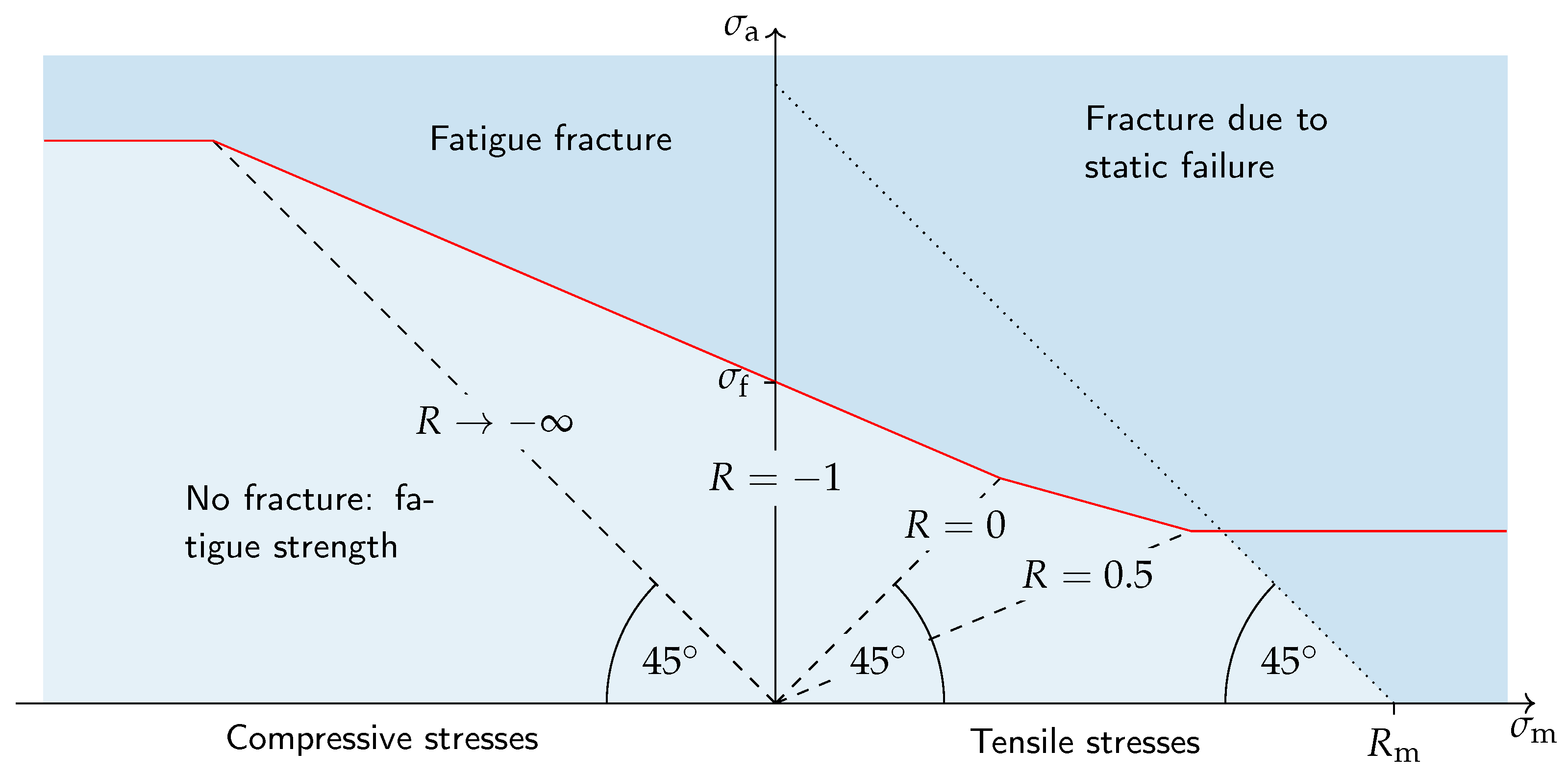
3.4. Occurring Deformations
3.5. Permissible Prestressing
3.6. Serviceability
3.7. Contour Accuracy
4. Potentials and Challenges
4.1. Comparison of the Concepts
4.2. Potentials
- Required work area;
- Handling of components;
- Decentralized production;
- Transportation;
- Lightweight design potential.
4.3. Challenges
- Mechanical issues;
- Costs;
- Acceptance of potential operators, customers.
5. Conclusions and Outlook
Author Contributions
Funding
Data Availability Statement
Acknowledgments
Conflicts of Interest
References
- Hong, K.S.; Shah, U.H.S. Dynamics and Control of Industrial Cranes; Advances in Industrial Control; Springer Nature: Singapore, 2019. [Google Scholar] [CrossRef]
- Griemert, R.; Römisch, P. Fördertechnik: Auswahl und Berechnung von Elementen und Baugruppen, 11th ed.; Springer Fachmedien: Wiesbaden, Germany, 2015. [Google Scholar] [CrossRef]
- Schweitzer, P.A. Fundamentals of Corrosion: Mechanisms, Causes, and Preventative Methods; Corrosion Technology; CRC Press: Boca Raton, FL, USA, 2009. [Google Scholar] [CrossRef]
- Dolan, C.; Hamilton, H. Prestressed Concrete: Building, Design, and Construction, 1st ed.; Springer: Cham, Switzerland, 2019. [Google Scholar] [CrossRef]
- Magnel, G. Prestressed Steel Structures. Struct. Eng. 1950, 28, 285–295. [Google Scholar]
- Ayyub, B.M.; Sohn, Y.G.; Saadatmanesh, H. Prestressed Composite Girders under Positive Moment. J. Struct. Eng. 1990, 116, 2931–2951. [Google Scholar] [CrossRef]
- Belletti, B.; Gasperi, A. Behavior of Prestressed Steel Beams. J. Struct. Eng. 2010, 136, 1131–1139. [Google Scholar] [CrossRef]
- Wadee, A.; Hadjipantelis, N.; Gardner, L.; Lozano-Galant, J. Stability of steel struts with externally anchored prestressed cables. J. Constr. Steel Res. 2020, 164, 105790. [Google Scholar] [CrossRef]
- Gosaye, J.; Gardner, L.; Wadee, M.A.; Ellen, M.E. Tensile performance of prestressed steel elements. Eng. Struct. 2014, 79, 234–243. [Google Scholar] [CrossRef]
- Gosaye, J.; Gardner, L.; Wadee, M.A.; Ellen, M.E. Compressive behaviour and design of prestressed steel elements. Structures 2016, 5, 76–87. [Google Scholar] [CrossRef]
- Hadjipantelis, N.; Gardner, L.; Wadee, A. Prestressed cold-formed steel beams: Concept and mechanical behaviour. Eng. Struct. 2018, 172, 1057–1072. [Google Scholar] [CrossRef]
- Hadjipantelis, N.; Gardner, L.; Wadee, M.A. Design of prestressed cold-formed steel beams. Thin-Walled Struct. 2019, 140, 565–578. [Google Scholar] [CrossRef]
- Aragón, F.; Goberna, M.; López, M.; Rodríguez, M. Nonlinear Optimization; Springer Undergraduate Texts in Mathematics and Technology; Springer International Publishing: Berlin/Heidelberg, Germany, 2019. [Google Scholar] [CrossRef]
- DIN EN 15011:2021-10; Cranes-Bridge and Gantry Cranes. Deutsches Institut für Normung e.V.: Berlin, Germany, 2021.
- DIN EN 13001-3-1:2012+A1:2013; Cranes-General Design-PArt 3.1: Limit States and Proof Competence of Steel Structure. Deutsches Institut für Normung e.V.: Berlin, Germany, 2015.
- DIN EN 13001-3-3:2014; Cranes-General Design-Part 3.3: Limit State and Proof of Competence of Wheel/Rail Contacts. Deutsches Institut für Normung e.V.: Berlin, Germany, 2015.
- ISO 22986:2007(E); Cranes-Stiffness-Bridge and Gantry Cranes. International Organization for Standardization: Geneva, Switzerland, 2015.
- Savkovic, M.; Bulatovic, R.; Gasic, M.; Pavlovic, G.; Stepanovic, A. Optimization of the box section of the main girder of the single-girder bridge crane by applying biologically inspired algorithms. Eng. Struct. 2017, 148, 452–465. [Google Scholar] [CrossRef]
- Qu, X.; Xu, G.; Fan, X.; Bi, X. Intelligent Optimization Methods for the Design of an Overhead Travelling Crane. Chin. J. Mech. Eng. 2015, 28, 187–196. [Google Scholar] [CrossRef]
- Sun, C.; Tan, Y.; Zeng, J.C.; Pan, J.S.; Tao, Y. The Structure Optimization of Main Beam for Bridge Crane Based on An Improved PSO. J. Comput. 2011, 6, 1585–1590. [Google Scholar] [CrossRef]
- Lagaros, N.; Manolis, P. Applied soft computing for optimum design of structures. Struct. Multidiscip. Optim. 2012, 45, 787–799. [Google Scholar] [CrossRef]
- Pavlovic, G.; Savkovic, M. Analysis and Optimization of the Main Girder of the Bridge Crane with an Asymmetric Box Cross-Section. Sci. Tech. Rev. 2022, 72, 03–11. [Google Scholar] [CrossRef]
- Su, S.; Qin, Y.; Yang, K. Structural optimization of unsymmetrical eccentric load steel box girder based on new swarm intelligence optimization algorithm. Int. J. Steel Struct. 2022, 22, 1518–1536. [Google Scholar] [CrossRef]
- Wang, J.; Yan, W.; Gui, X. Application of Matlab Optimization Tool Box on Sections of Prestressed Steel-Concrete Composite Box Girder. Adv. Mater. Res. 2011, 366, 177–180. [Google Scholar] [CrossRef]
- Bolender, S.; Oellerich, J.; Braun, M.; Golder, M. Skalierbarer modularer Brückenkranträger in Segmentbauweise. Logist. J. Proc. 2017, 1–8. [Google Scholar] [CrossRef]
- Oellerich, J. Fundamentals for the Dimensioning and Optimization of Prestressed Segmented Girders for Application in Bridge Crane Systems. Ph.D. Thesis, Karlsruhe Institute of Technology (KIT), Karlsruhe, Germany, 2021. [Google Scholar] [CrossRef]
- VDI 3655; Requirements on Flat Pallets for the Use in Mechanised and Automated Conveying and Storage Systems. VDI: Düsseldorf, Germany, 2008.
- Timoshenko, S.P.; Gere, J.M. Theory of Elastic Stability, 2nd ed.; Dover Civil and Mechanical Engineering; Dover Publications, Inc.: Mineola, NY, USA, 2009. [Google Scholar]
- von Tetmajer, L. Die Gesetze der Knickungs- und der zusammengesetzten Druckfestigkeit der technisch wichtigsten Baustoffe (Classic Reprint); Fb&c Limited: London, UK, 2018. [Google Scholar]
- O’Hanlon, J.F.; McCauley, M.E. Motion Sickness Incidence as a Function of the Frequency and Acceleration of Vertical Sinusoidal Motion. Aerosp. Med. 1974, 45, 366–369. [Google Scholar] [PubMed]
- Wächter, M.; Müller, C.; Esderts, A. Angewander Festigkeitsnachweis nach FKM-Richtlinie, 1st ed.; Springer Vieweg: Wiesbaden, Germany, 2017. [Google Scholar] [CrossRef]
- VDI 2230; Systematic Calculation of Highly Stressed Bolted Joint—Joints with One Cylindrical Bolt. VDI: Düsseldorf, Germany, 2016.

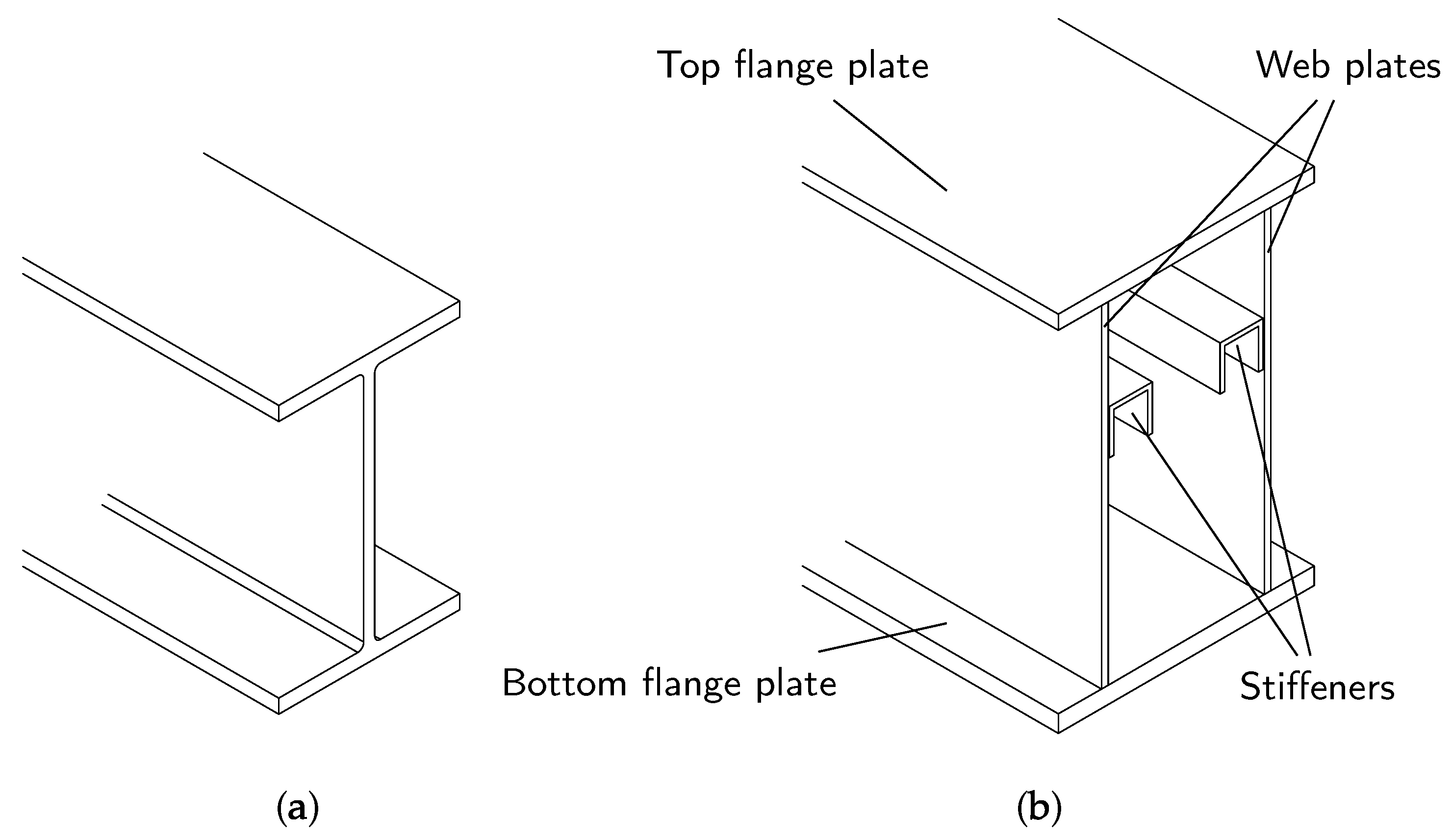

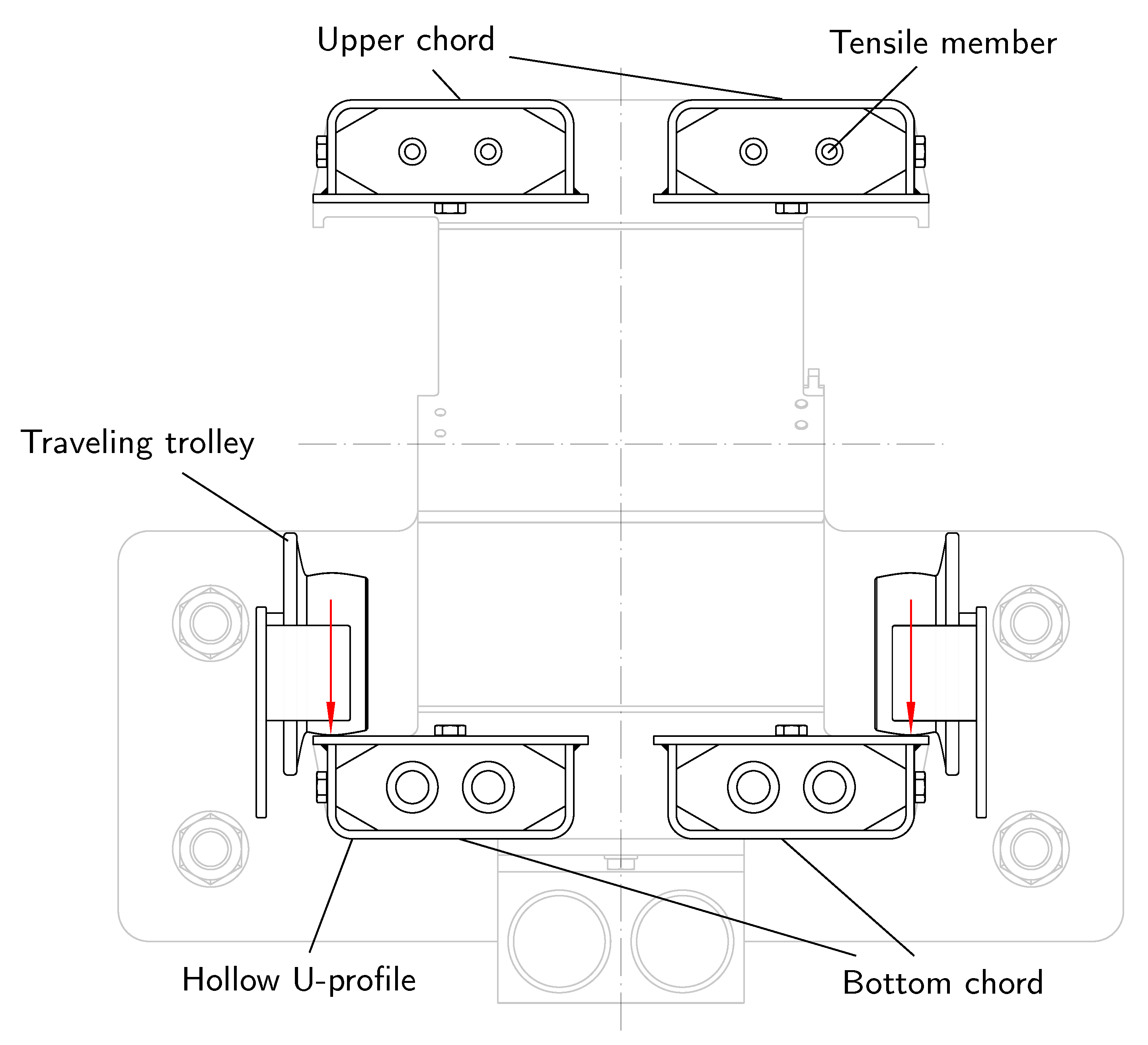
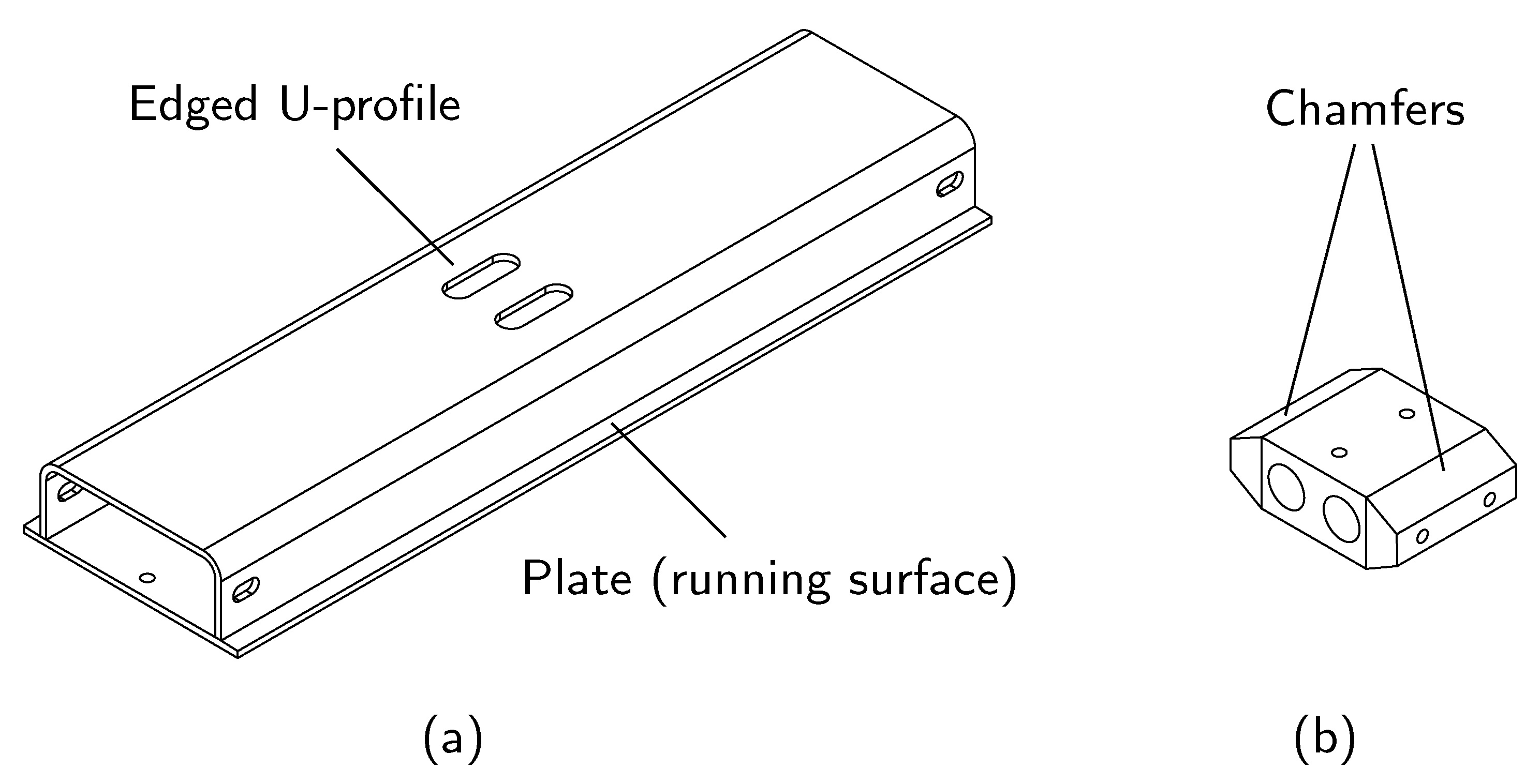
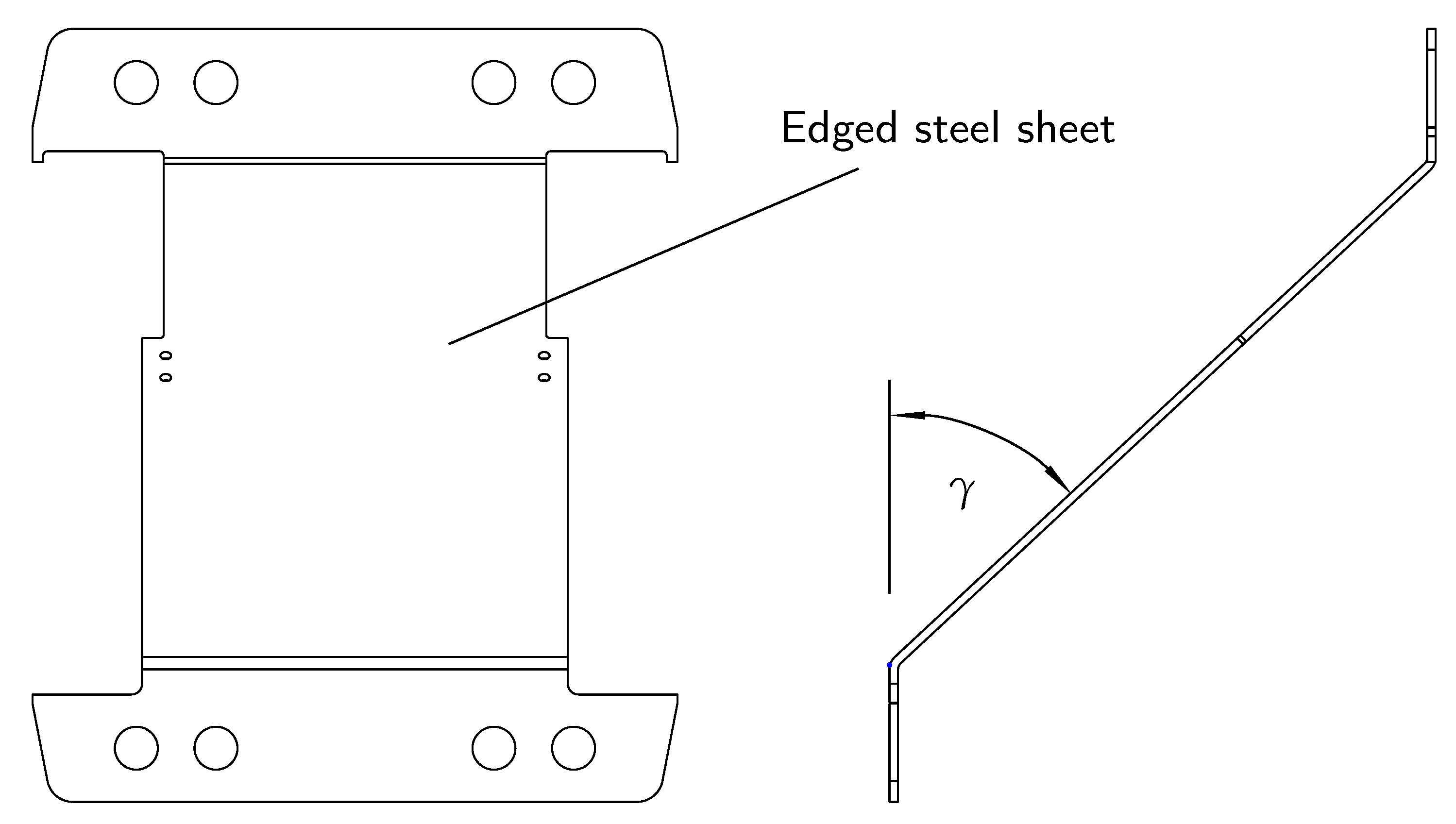



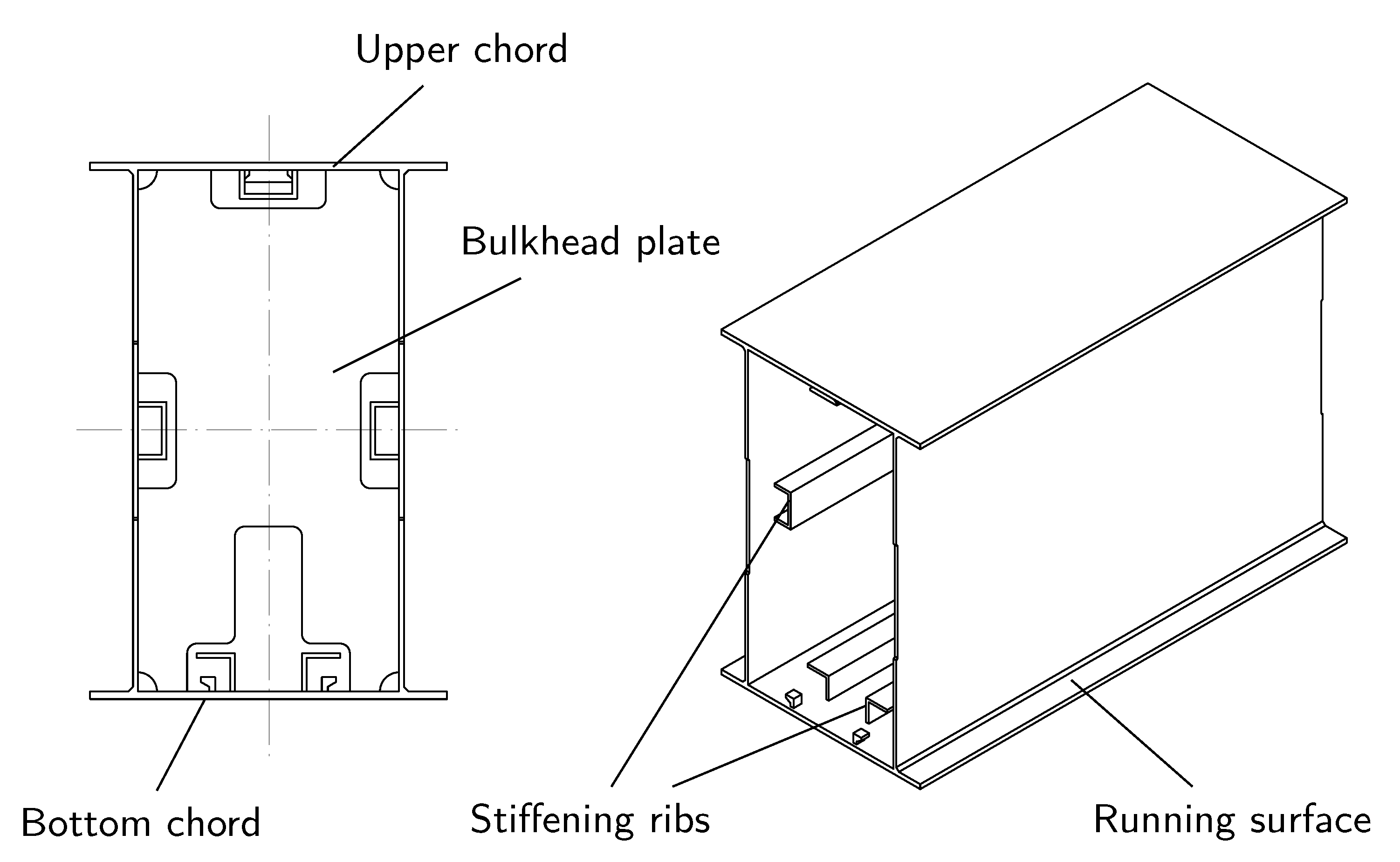
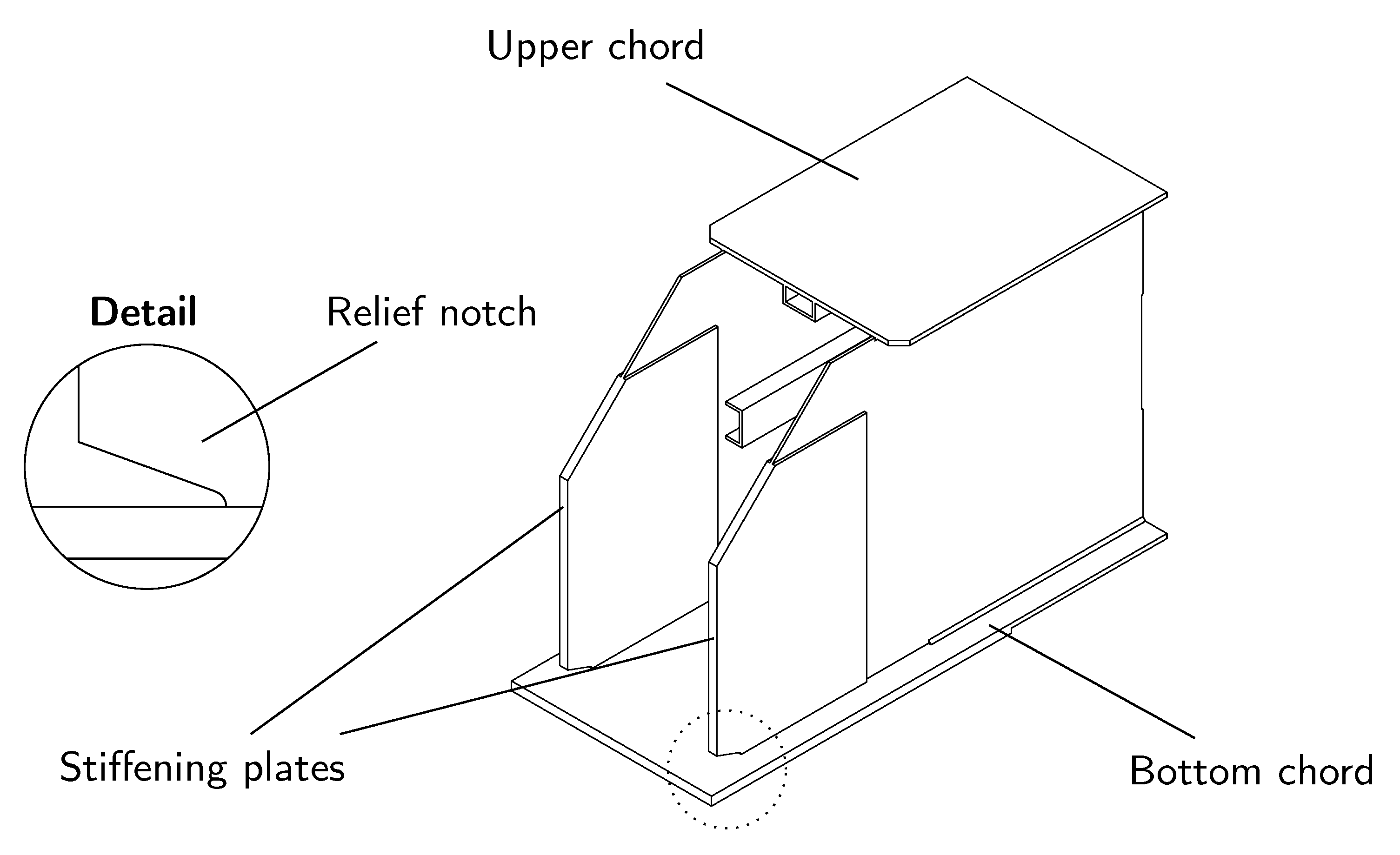
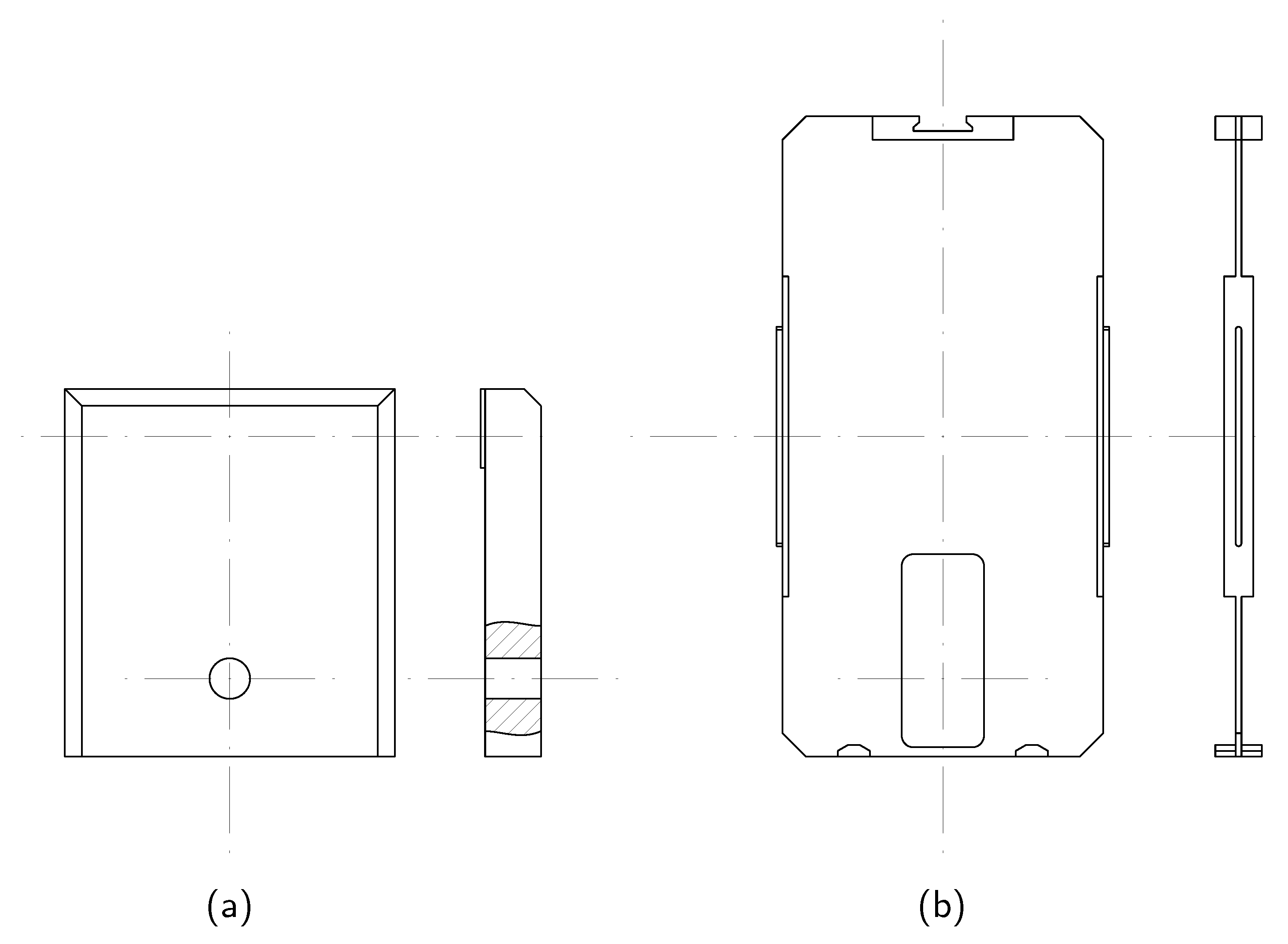

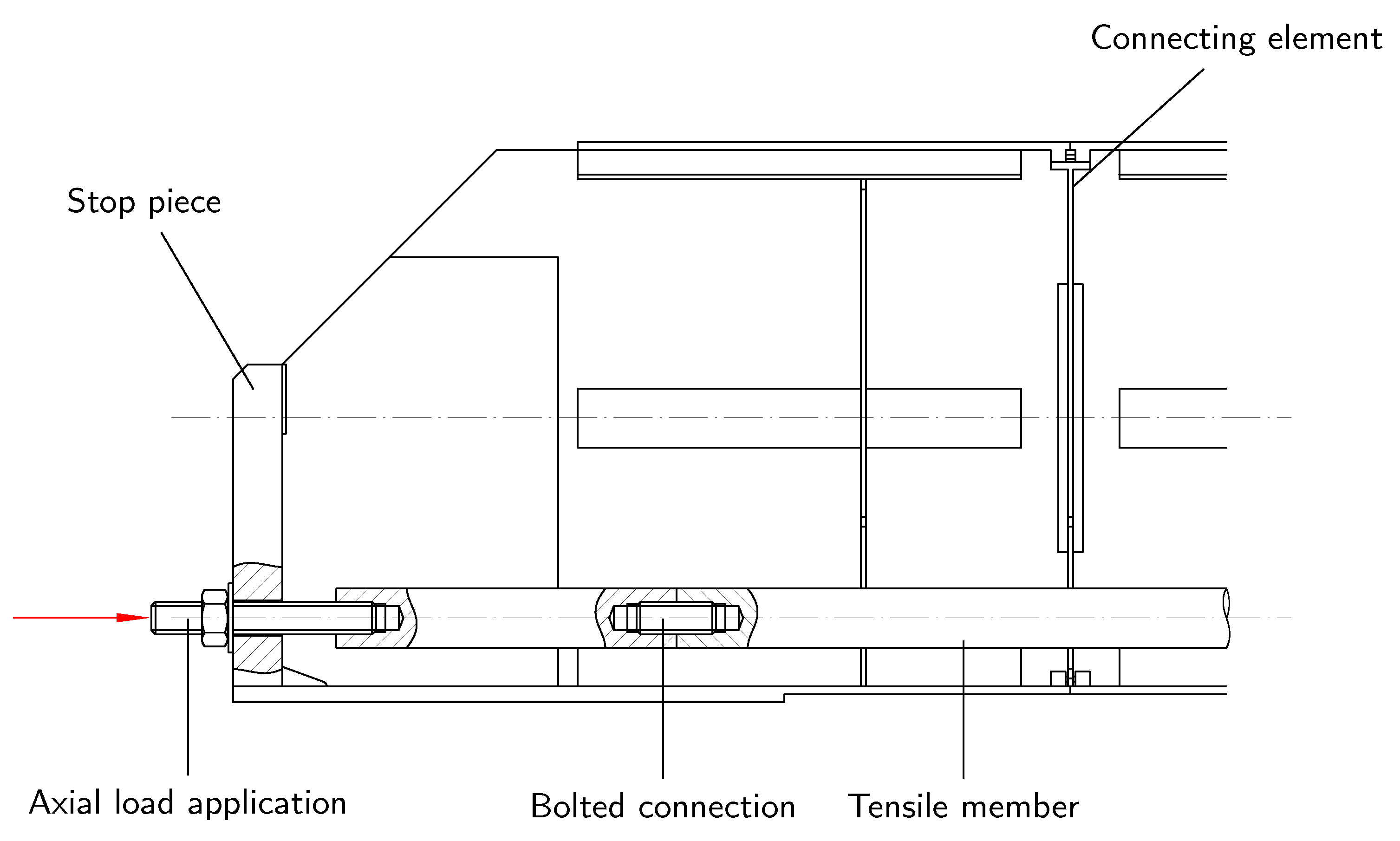

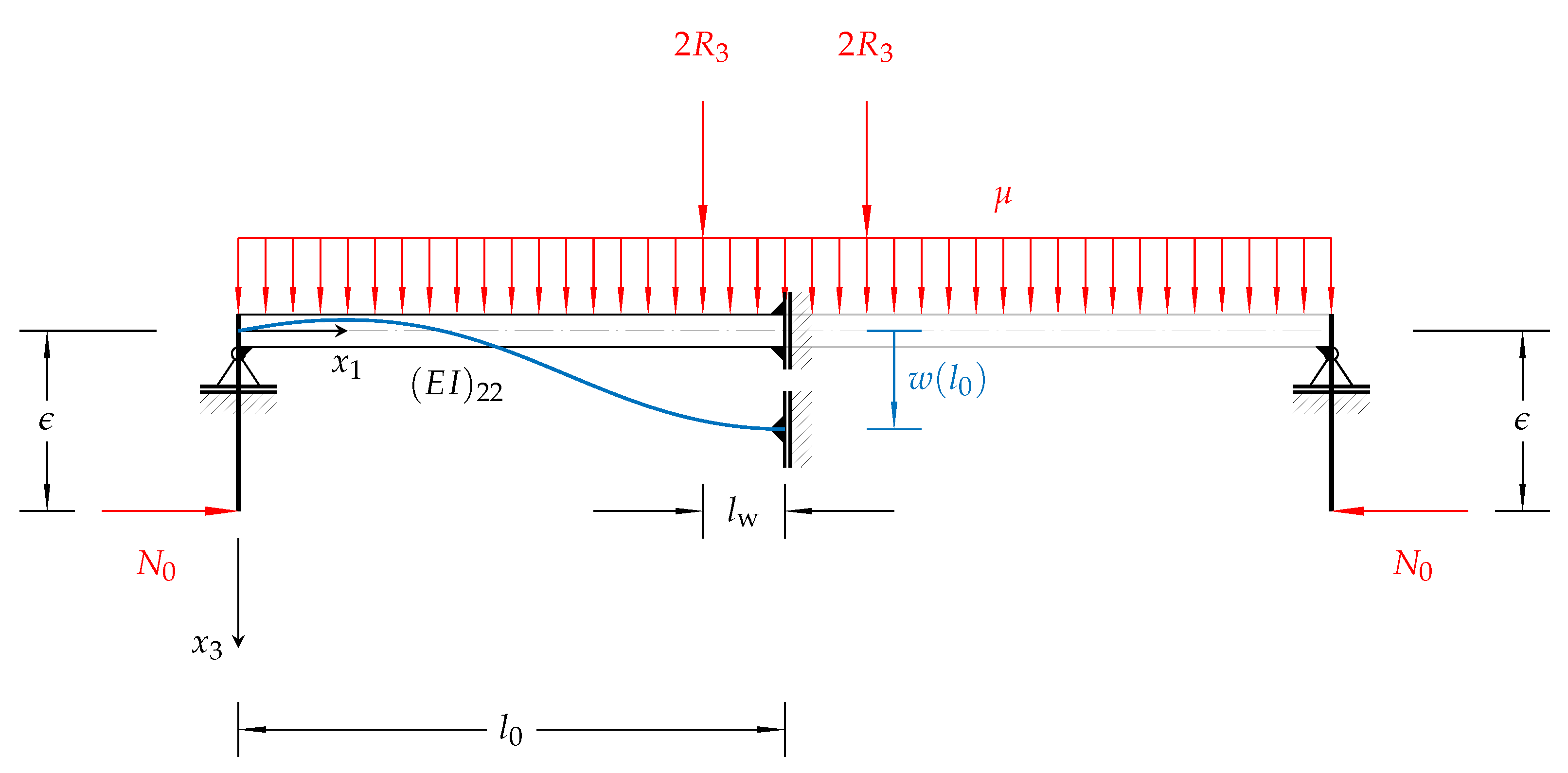
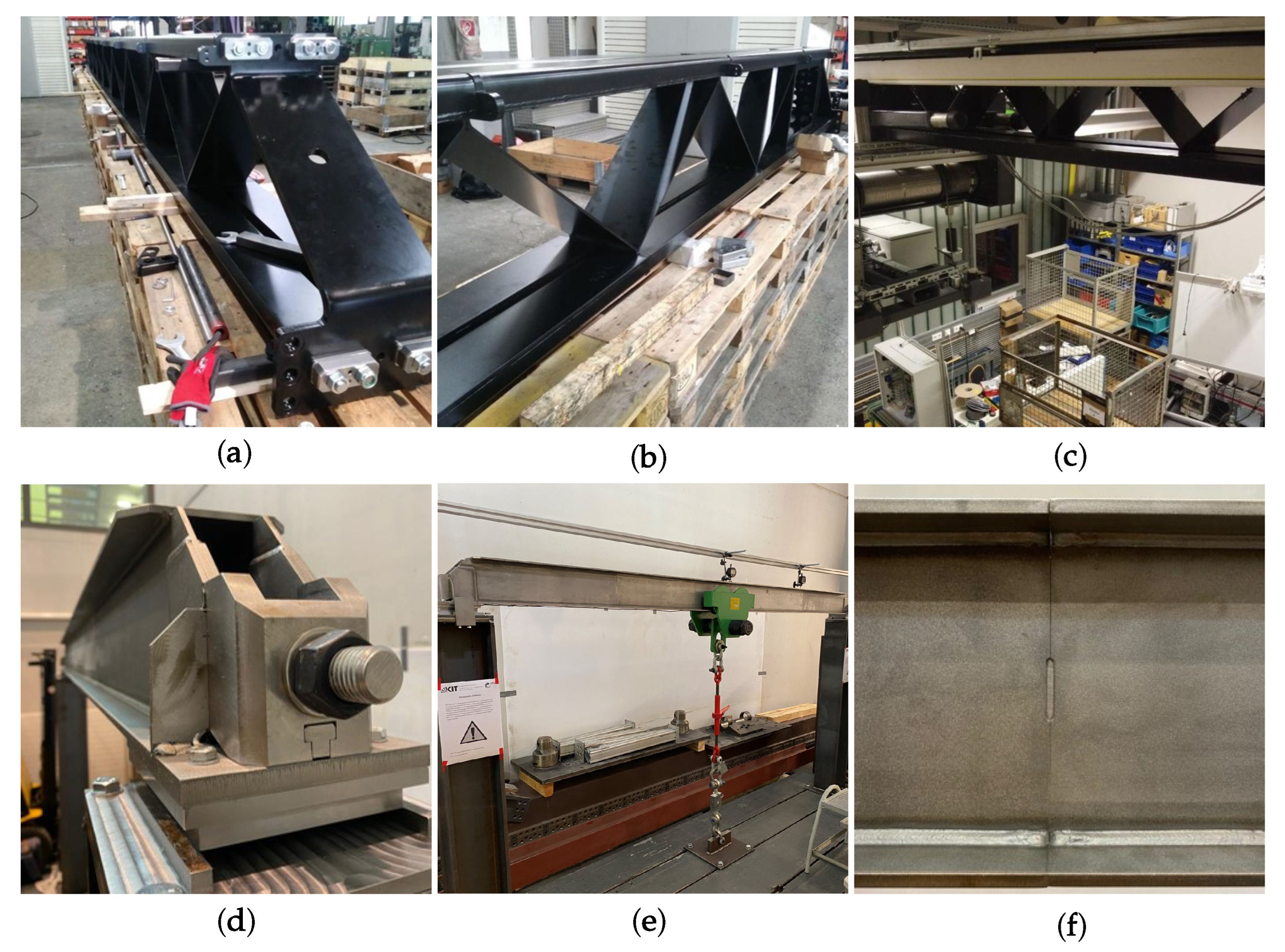
| Type | |||
|---|---|---|---|
| 1 | |||
| 2 | |||
| 3 | |||
| 4 |
| Type | ||||
|---|---|---|---|---|
| 4900 | 10 | 950 | 3 | |
| 5150 | 10 | 1200 | 2 | |
| 5500 | 11 | 1150 | 4 | |
| 6350 | 13 | 1200 | 1 |
| Criterion | TD | BD | Description |
|---|---|---|---|
| Small number of variants (individual components) | Compared to the BD, the TD uses a comparatively large number of different individual parts which are to be manufactured. | ||
| Low complexity of the design | The large number of individual parts in the TD results in them having to be precisely matched to one another during assembly. The BD uses less parts, but they are more complex to manufacture. | ||
| Usage of commercially available traveling trolley | Due to the necessary inner height of the hollow profiles of the TD, the use of a conventional trolley is not possible. In this case, a special design is required in which the chassis is adapted accordingly. A conventional trolley can be used for the BD. | ||
| Low manufacturing effort | The production of the individual parts of the TD is less complex compared to the welded segments in the BD. Although more individual processes are required (e.g., cutting, edging and welding), these are easier to implement. | ||
| Easy component handling | Due to the smaller dimensions of the TD components, they are easier to handle, i.e., they can be moved and mounted without additional equipment. The components of the BD, on the other hand, require additional handling equipment for larger dimensions. | ||
| Short assembly time | The large number of individual parts in the TD results in a longer assembly time. The assembly of the BD can be done faster, but this requires a safe handling of the additional handling equipment. | ||
| Low assembly effort | The smaller dimensions of the components in the TD allow them to be mounted more easily. The assembly of the components in the BD is more challenging and requires more effort. | ||
| Transportation on EUR pallets | Both concepts allow the transportation of parts on EUR pallets. | ||
| Small number of crucial weld seams | The weld seams on the TD are favorably positioned with regard to the load that occurs, since the wheel load is introduced directly into the web of the U-profile. In case of loss of the frictional force connection, however, the weld seam on the web plate of the bottom flange of the BD is subjected to particular stress risings at the joints. | ||
| Ensuring elastic stability | Both the web plates and the plates of the upper and bottom chord in the BD are exposed to high compressive stresses and can tend to buckle. For this reason, they must be designed accordingly. In the TD, on the other hand, the hollow U-profiles are designed robustly; only the compressive stresses in the web plates have to be taken into account separately. |
Disclaimer/Publisher’s Note: The statements, opinions and data contained in all publications are solely those of the individual author(s) and contributor(s) and not of MDPI and/or the editor(s). MDPI and/or the editor(s) disclaim responsibility for any injury to people or property resulting from any ideas, methods, instructions or products referred to in the content. |
© 2023 by the authors. Licensee MDPI, Basel, Switzerland. This article is an open access article distributed under the terms and conditions of the Creative Commons Attribution (CC BY) license (https://creativecommons.org/licenses/by/4.0/).
Share and Cite
Oellerich, J.; Büscher, K.J. Application of Segmented and Prestressed Supporting Structures in Bridge Crane Systems: Potentials and Challenges. Appl. Syst. Innov. 2023, 6, 105. https://doi.org/10.3390/asi6060105
Oellerich J, Büscher KJ. Application of Segmented and Prestressed Supporting Structures in Bridge Crane Systems: Potentials and Challenges. Applied System Innovation. 2023; 6(6):105. https://doi.org/10.3390/asi6060105
Chicago/Turabian StyleOellerich, Jan, and Keno Jann Büscher. 2023. "Application of Segmented and Prestressed Supporting Structures in Bridge Crane Systems: Potentials and Challenges" Applied System Innovation 6, no. 6: 105. https://doi.org/10.3390/asi6060105






